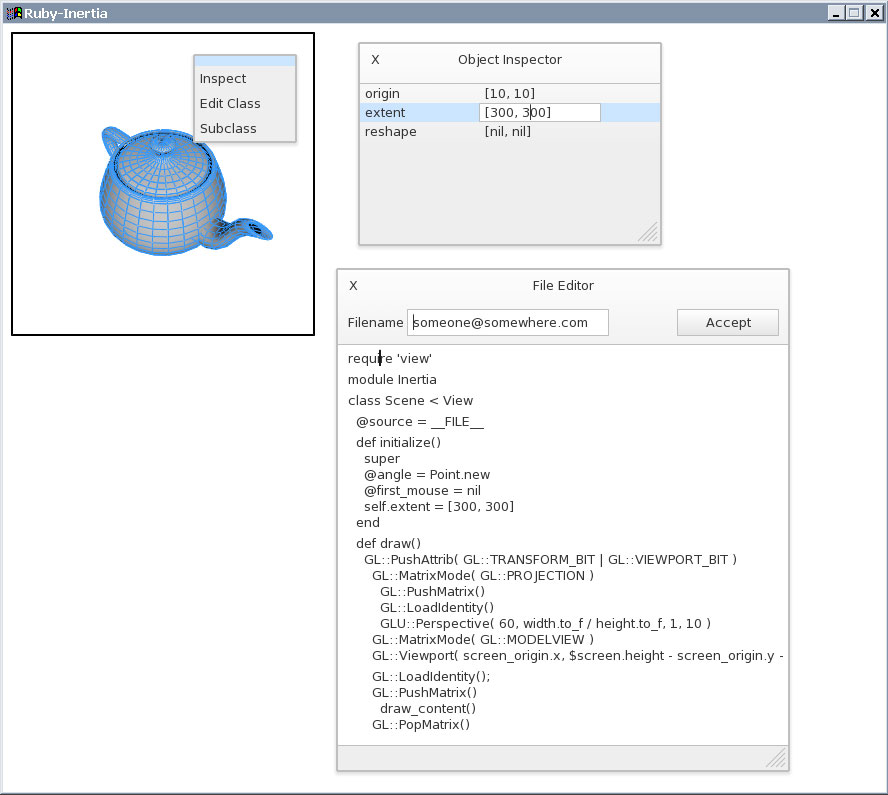I know there are some Smalltalk folks who hang out here, so I’d like to
pose
perhaps a fairly ignorant question:
How far away is irb from a Smalltalk development environment?
Put another way, what must need to be done to get to a Smalltalk
development
environment? Will being able to load / save image files get me closer
(have
folks done this by serializing the ObjectSpace tree to disk already)? Or
am
I just going to have to experience it for myself to get the gestalt of
Smalltalk IDEs?
Thanks for any & all insight …
-John
John L. wrote:
I know there are some Smalltalk folks who hang out here, so I’d like to pose
perhaps a fairly ignorant question:
How far away is irb from a Smalltalk development environment?
Put another way, what must need to be done to get to a Smalltalk development
environment? Will being able to load / save image files get me closer (have
folks done this by serializing the ObjectSpace tree to disk already)? Or am
I just going to have to experience it for myself to get the gestalt of
Smalltalk IDEs?
Not being a Smalltalk guy myself…
I’d guess that it’s quite a long way from IRB to a modern Smalltalk IDE:
IRB doesn’t have a graphical UI for example. But I’ve heard there are
quite a number of decent Ruby IDE’s out there.
Note also, that marshaling object graphs doesn’t help here because that
doesn’t capture methods. So the tool would have to keep track of
defined variables and methods and store them somehow.
Kind regards
robert
John L. wrote:
I know there are some Smalltalk folks who hang out here, so I’d like to pose
perhaps a fairly ignorant question:
How far away is irb from a Smalltalk development environment?
Put another way, what must need to be done to get to a Smalltalk development
environment? Will being able to load / save image files get me closer (have
folks done this by serializing the ObjectSpace tree to disk already)? Or am
I just going to have to experience it for myself to get the gestalt of
Smalltalk IDEs?
I’ve been working on a Self/Squeak type interface environment for Ruby:

I think Self and Squeak are pioneers in live design, but I find them a
little
over-complex. Ruby-Inertia is being designed from scratch using SDL,
OpenGL
and FreeType. I’ve written prototypes of it in C++, Io and Dylan also.
So
far, Ruby seems to be the easiest (I wonder why?  Nothing to release
Nothing to release
yet, it
needs a little more work.
http://research.sun.com/self/
Mike
The short answer is light years away. Go over to
http://www.object-arts.com and download the free Community Edition of
Dolphin and see for yourself. It makes all other IDE’s look antiquated.
On Mar 22, 2006, at 5:52 PM, John L. wrote:
live object graph? I guess I’m going to have to spend some time
digging into
the sources to see how the AST hangs together and whether that
would even
make any sense.
ParseTree can be used with Ruby2Ruby to persist some of the AST.
There are limitations though.
http://rubyforge.org/projects/parsetree/
–
Eric H. - [email protected] - http://blog.segment7.net
This implementation is HODEL-HASH-9600 compliant
http://trackmap.robotcoop.com
On 3/22/06, Robert K. [email protected] wrote:
Note also, that marshaling object graphs doesn’t help here because that
doesn’t capture methods. So the tool would have to keep track of
defined variables and methods and store them somehow.
Whoops - that’s right. Is it possible to persist Ruby’s AST as well as
the
live object graph? I guess I’m going to have to spend some time digging
into
the sources to see how the AST hangs together and whether that would
even
make any sense.
Thanks
-John
I forgot about ParseTree - thanks for making it!
-John
